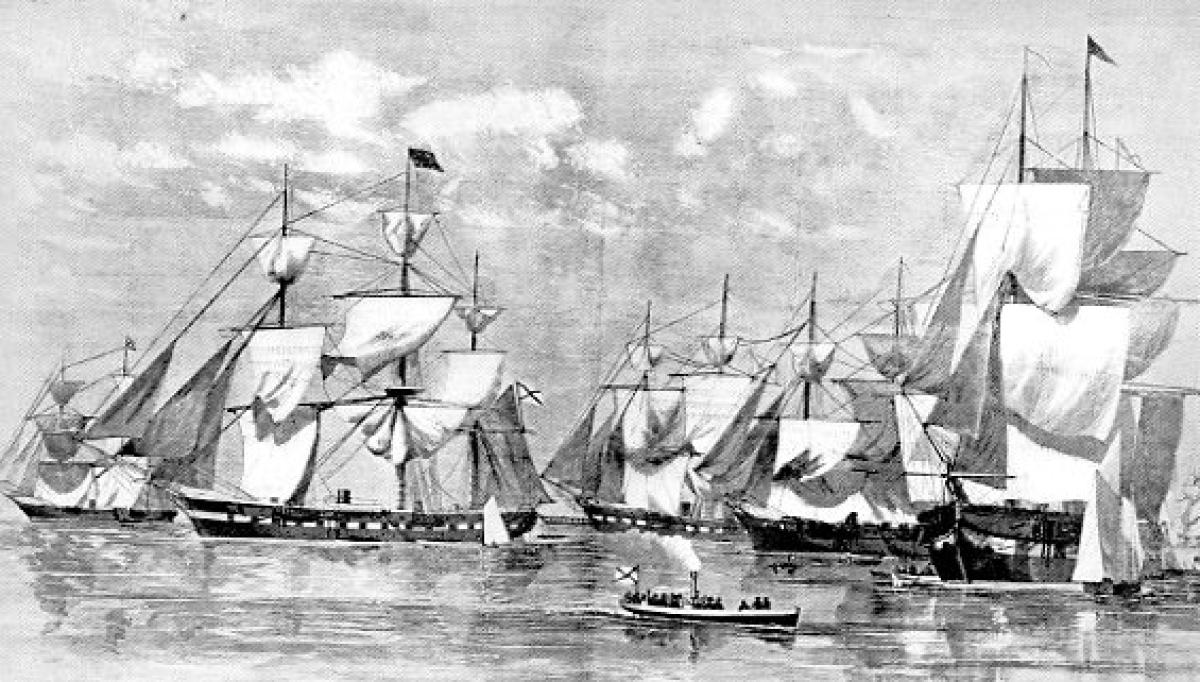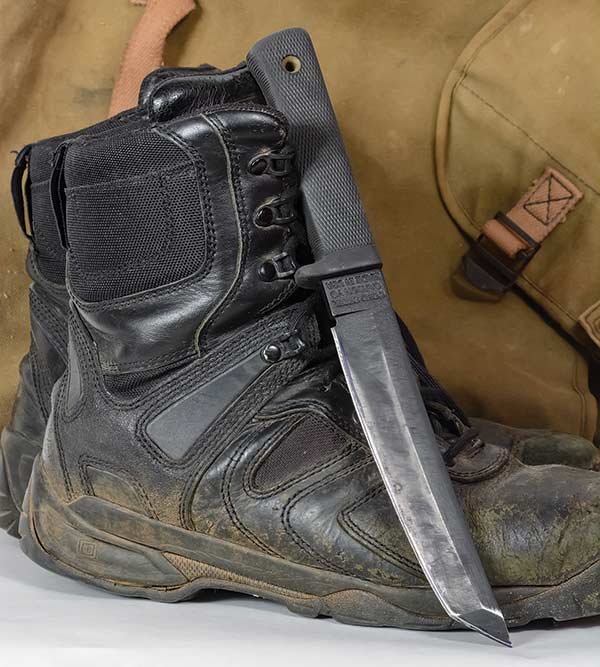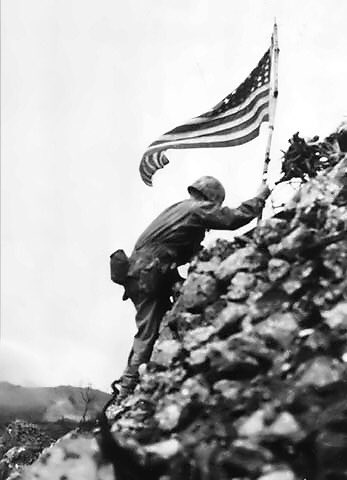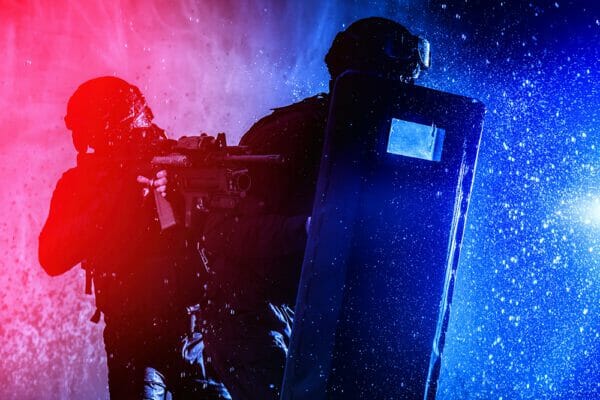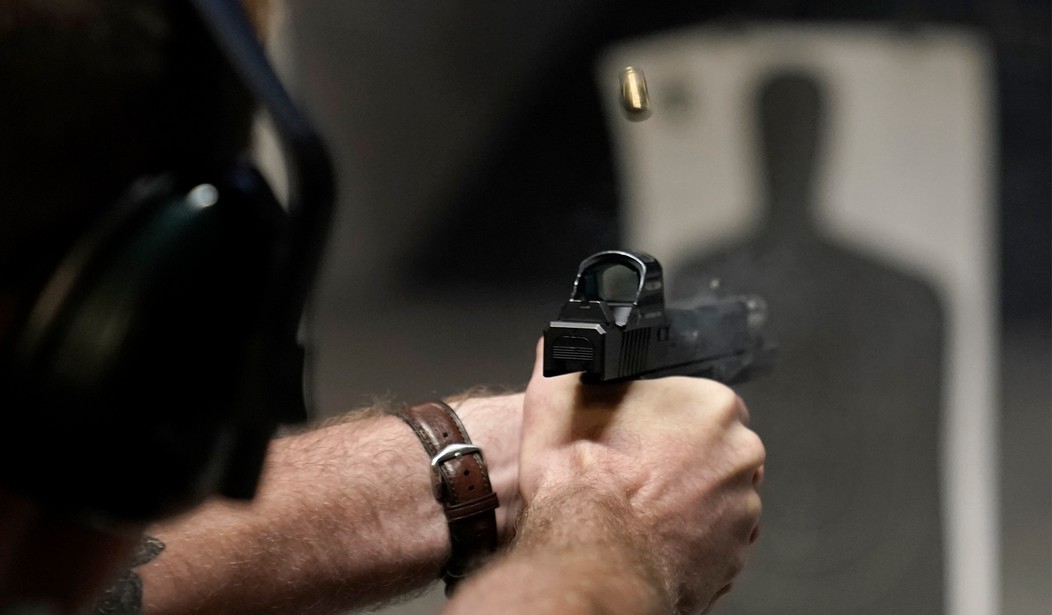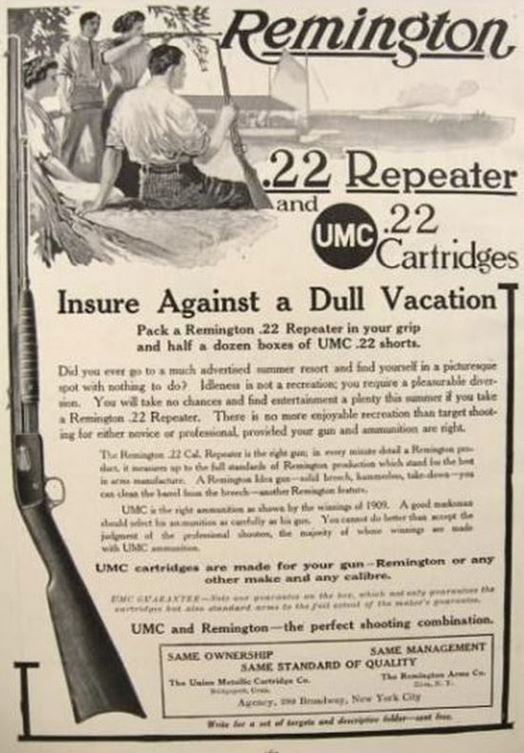The Visit of Russian Squadrons in 1863
One late September day in 1863 the Russian frigate Osliabia under the command of Captain Bourtakoff steamed into New York Harbor. The city authorities gave it the customary cordial welcome accorded to a man-of-war of a friendly nation paying a visit.
A few days later a Russian cruiser squadron commanded by Real Admiral Lessofsky and consisting of the frigates Alexander Nevsky (flagship), Peresvet, the corvets Variag and Vitiaz and the clipper Almaz cast anchor in New York Bay. This was a signal for the City Fathers to give the Russians a rousing reception. To quote the New York Daily Tribune of October 2, 1863, we hear that:
The “Joint Committee” went out to welcome the Russian visitors. The band of the North Carolina performed the beautiful Russian National Air, “God Save the Czar,” as it passed the vessels, while the Russian seamen mounted the riggings to acknowledge the compliment by loud and hearty cheers. The band of the flagship Alexander Nevsky struck up “Yankee Doodle” in return. A dozen of the ships’ boats were awaiting the arrival of the committee and the invited guests were transferred to the deck of the Russian flagship…The officers of the Russian fleet were standing on the starboard side in full-dress uniform with Admiral Lessofsky at the head. The seamen were drawn up in line on the port side and forward on the starboard side. The officers present numbered nearly threescore and were of the grades known in the Russian Navy as admiral, post captain, lieutenant, sub-lieutenant and midshipman. The uniforms of the Russian Navy are very attractive, being tastefully decorated with gold lace and embroidery about the collar and cuffs.
Great excitement prevailed in New York City. A grand parade was tendered to the Russian visitors. According to the newspapers:
one thousand metropolitan police marched in the parade, as well as units of the Seventh Regiment (the Daily Tribune did not fail to comment upon the excellent marching of the “Old Seventh”). The procession started at the foot of 23rd Street and went all the way down to 14th Street. Spectators lined the streets in great masses and everybody was waving flags and handkerchiefs from windows and housetops. It was estimated that over 30,000 people attended the parade. The Russian admiral and officers were feted by the city authorities and toasts were drunk “in good wine” both to the health of the President of the United States and the Czar of Russia.
Another surprise awaited the American people. A few days later the telegraph flashed news from San Francisco that a squadron of Russian cruisers had passed the Golden Gate and was riding at anchor in San Francisco Bay. This unit was commanded by Rear Admiral Popoff and was made up of the following ships: The corvets Rynda, Kalevala, Bogatyr, and Novyk, and the clippers Abrek and Gaydamak.
All this happened, as stated before, in the year 1863. Northern shipping at that time was being severely ravaged by the commerce raiders of the Confederacy. The exploits of these raiders equaled, if not surpassed, both in adroitness and damages inflicted upon the Northern merchant marine of the United States, the activities of the well-known German raider Emden and her sister-ships during the World War. It has been recorded that by November, 1864, more than 1,300 vessels flying the Union flag had been sunk by Southern raiders, the net proceeds arising from the sale of condemned prize property amounting to over 13 million dollars.
If we keep in mind that the Northern merchant fleet on the high seas had been reduced during the Civil War from about 2½ million tons to a little over 1½ million tons and was being continuously harassed by successful attacks of the Alabama,Florida, and other Confederate ships, the arrival in New York and San Francisco of cruiser units belonging to a friendly nation was naturally an event of great importance.
As far as the Union was concerned the political situation presented itself as follows: England was supporting the South more or less openly by allowing British shipyards to build ironclads and cruisers for the Confederacy, half-heartedly interfering with the delivery of these ships only upon the most strenuous though tactful remonstrances from the United States Ambassador, Charles Francis Adams, whose protests, however, were not always successful.
Let us now examine more closely the motives that prompted Czar Alexander II to dispatch his fleets to New York and San Francisco.
In January, 1863, the latest Polish revolt had broken out openly. Due to the intensive propaganda carried on for some time by the numerous Polish émigrés in various European capitals, the rebellion quickly gained the support of public opinion throughout Europe. In France especially the Polish patriots were in high hopes. The adventurer-emperor Napoleon III was favorably inclined toward their cause. His Minister of State at that time was Count Walewski, a son of the Emperor’s august uncle, Napoleon I and the Polish Countess Walewska, who was naturally pro-Polish. Moreover it was a political tradition of the second empire to further Polish national aspirations in reverence to the memory of the Great Corsican who created the independent Grand Duchy of Warsaw.
Napoleon III succeeded in persuading Great Britain and Austria to join him in a diplomatic demonstration against Russia on the Polish question. Both of his allies deemed the moment opportune to exact some advantages from the Czar while the latter was preoccupied by the disturbances on his western frontier. Prussia refused to become a party of the coalition and Bismarck, in defiance of the German Parliament and public opinion, even offered the Czar military assistance to quell the Polish insurrection. The Allies, France, Austria, and England, entered into a lengthy exchange of notes with the Russian government and the political situation became alarmingly tense. Czar Alexander II, with open rebellion in his Polish and Lithuanian provinces, had also to reckon with the possibility that Finland and the Caucasus would rise in revolt at the first opportunity. Such an opportunity would easily present itself with the arrival of joint Anglo-French fleets and landing detachments both in the Baltic and Black Seas.
The demands of the Allies became increasingly aggressive. Finally Napoleon III dispatched a sharp note to Russia demanding immediate recognition of Poland as an independent country. This the Russian government could not grant but it realized at the same time that a refusal of the French demand meant only one thing—war. The crisis approached rapidly. Russia faced a desperate situation. Her Navy, recently reorganized, was absolutely insignificant in comparison with the fleets of the two largest naval powers of Europe. In case of war the seacoasts of her far-flung Empire, in the Baltic and Black Seas and the Far East, were entirely defenseless and exposed to blockade, bombardment, and landing of troops by her enemies. Her only chance lay in having England quit, as in such an event the French fleet alone would not be sufficiently large to bother Russia on all her maritime frontiers. Thus Russia would not be forced to scatter her Army in order to defend her various seaboard provinces. Besides, Austria would think twice before attacking the innumerable host of “Holy Russia” concentrated to repulse any invasion, especially as Emperor Francis Joseph knew that Prussia would not hesitate to come to the assistance of the Czar.
Russia’s problem reduced itself to the means of keeping Great Britain out of an alliance with France and Austria. A simple and at the same time brilliant solution was found by Admiral N. K. Krabbe, at that time in command of the Russian Navy.
The dashing exploits of the Alabama and other Confederate raiders had conclusively demonstrated that a comparatively small number of well-armed and equipped cruisers could cause havoc among the merchant marine of their enemy, even if their adversary had a much superior naval force. As more than 75 per cent of the British merchant fleet at the time of the Civil War consisted of sailing vessels, the sudden appearance of about a dozen Russian steam-propelled cruisers both in the Atlantic and Pacific would greatly alarm England. These cruisers, which were able to sail under canvas when things were slow and get up steam and easily overhaul any prize they sighted, could still evade on the huge expanse of the two oceans any possible dragnet of the British Navy. They had a great advantage over the German raiders of the World War inasmuch as they were not dependent to such an extent on coaling stations, but could cruise under sail for practically an unlimited amount of time if necessary.
The vision of a dozen of such cruiser raiders ravaging British merchantmen on all the Seven Seas was enough to strike fear to the heart of even the staunchest Tory, because, after all, “Britannia rules the waves” only for her commerce, and the balance sheet of an English merchant is almost as important to him as the Magna Charta.
Fully realizing all this, Admiral Krabbe submitted to Czar Alexander II his daring plan.
The Russian Navy at that time commanded only about twelve vessels which were up to date and fit for cruiser duty. He proposed that two cruiser squadrons of approximately equal strength should be formed and dispatched to Union ports, one from St. Petersburg and the other from Vladivostok, with orders to arrive simultaneously in New York and San Francisco, respectively. The success of the whole plan depended entirely upon its being carried out both swiftly and secretly. Both fleets were outfitted for the crossing and subsequent cruiser duty on the high seas in less than a month. The entire personnel of the expedition was selected from unmarried men.
The squadron that left St. Petersburg for New York was the most important one and it was, therefore, especially necessary for this unit not to divulge its movements as, in view of the straitened relations of Russia with England and France, these two powers would undoubtedly prevent the squadron from leaving the Baltic Sea. Orders were, therefore, issued to Admiral Lessofsky, commanding this squadron, to have his ships leave Kronstadt (the naval base of St. Petersburg) singly, as if to relieve ships on patrol duty off the coast of Courland. Near the island of Bornholm, two colliers awaited them and the squadron replenished its bunkers. In order to hide his movements Admiral Lessofsky then proceeded through the seldom used passage of the Little Belt, avoiding the main trade route of the Big Belt where he would have been in danger of encountering British scouting vessels. Once out of the Baltic Sea he set his course straight north and leaving the British Isles far south turned westward for New York.
In the meantime Admiral Popoff, in command of the other squadron, had left Vladivostok.
The successful synchronization of the movements of the two squadrons starting from points a continent apart and with the distance to their respective ports of destination varying many thousands of miles was a remarkable achievement for those days, especially if we realize that at that time there were no telegraph or railroad communications between St. Petersburg and Vladivostok and the order to Admiral Popoff had to be dispatched by special courier who traveled many weeks in order to deliver it. The order to Popoff contained among others the instruction to place his ships at the disposal of the Federal admiral should the English or French fleet attack the city of San Francisco but to remain neutral as long as the bombardment was concentrated on the military fortifications only.
A surprised Europe learned one day from arriving American newspapers that a Russian cruiser squadron had cast anchor in the harbor of New York and that a few days later another Russian fleet had passed the Golden Gate. These newspapers also brought accounts of the enthusiastic reception of the Russians by the American people.
The impression created by these events on the governments and public opinion of the three Allies was tremendous. It now appeared that while the two mightiest naval powers of the time were threatening the coasts of the Russian Empire, the Czar had turned the tables on them and his fleet was menacing England and France from the rear. Having evaded their watchfulness, the Russian squadrons now occupied, especially with regard to England, such a commanding and invulnerable position that the Allies were forced to change their policy abruptly. All speculations as to advantages of actions against Russia’s unprotected coasts momentarily faded before the possibility of the colossal losses which the Russians could inflict upon the sea trade and colonies of England and France. Russia’s game was won.
The first power of the coalition to sense the unsteadiness of the situation—the possibility of England withdrawing from the Alliance—was Austria. She not only hastened to compromise with Russia but expressed her willingness to co-operate in the quelling of the Polish revolution. A sharp note which England already had dispatched to St. Petersburg was hurriedly stopped in Berlin and soon England abstained completely from further interfering with Russian affairs. Left alone, Napoleon III tried to “save his face” by suggesting a congress to discuss the Polish question but this proposal found no response either in Austria or England. A few weeks later Alexander II issued an Imperial Rescript regarding foreign interference in the Polish situation couched in such phrases that had it been published before the arrival of the Russian fleet in America, it would have meant immediate war with the Allies. Nothing happened now, however.
Both Russian squadrons stayed in America for almost a year and were recalled only after the Polish rebellion had been definitely crushed and when the ultimate success of the North was clearly visible and any danger of England’s intervention in the Civil War had vanished.
After the end of the Civil War, the American government, learning of the attempt on the life of Czar Alexander II sent to St. Petersburg a special naval detachment consisting of the monitor Miantonomoh and steamer Augusta with a delegation to congratulate the Emperor on his deliverance from danger and to express to Russia the appreciation of the United States for the help Russia rendered to preserve the unity of the American people by sending her Beet to America.
The question, whether England’s entry into the war on the side of the Confederacy at this critical moment of the struggle would have been crucial to the North is a matter of speculation for authorities on military operations. It is undisputable, however, that it would have created a most precarious situation for the Union Government and seriously jeopardized its chances for victory.
It was, of course, for various reasons that England decided to remain neutral, but the presence of Russian cruisers both in the Atlantic and Pacific played undoubtedly a major part in influencing British statesmen to adopt that policy.
As we have seen, Russia launched this naval expedition primarily in her own interest, to avoid a threatening war in which she would have to face a superior enemy while her western provinces were in open rebellion and other borderlands ready to revolt at the first opportune moment. We must keep in mind, however, that the United States and Russia were traditionally on friendly terms. As America alone had stood by Russia in 1854 during the Crimean War, nine years later Russia was the only great power siding with the Federal Government and quite openly expressing its friendship, although Prussia and a few smaller European countries were also sympathetic with the North.
The services Russia thus rendered the United States undoubtedly influenced Congress in 1867 to agree to the purchase of Alaska upon request from Czar Alexander II. Alaska at that time was considered a barren wasteland.
